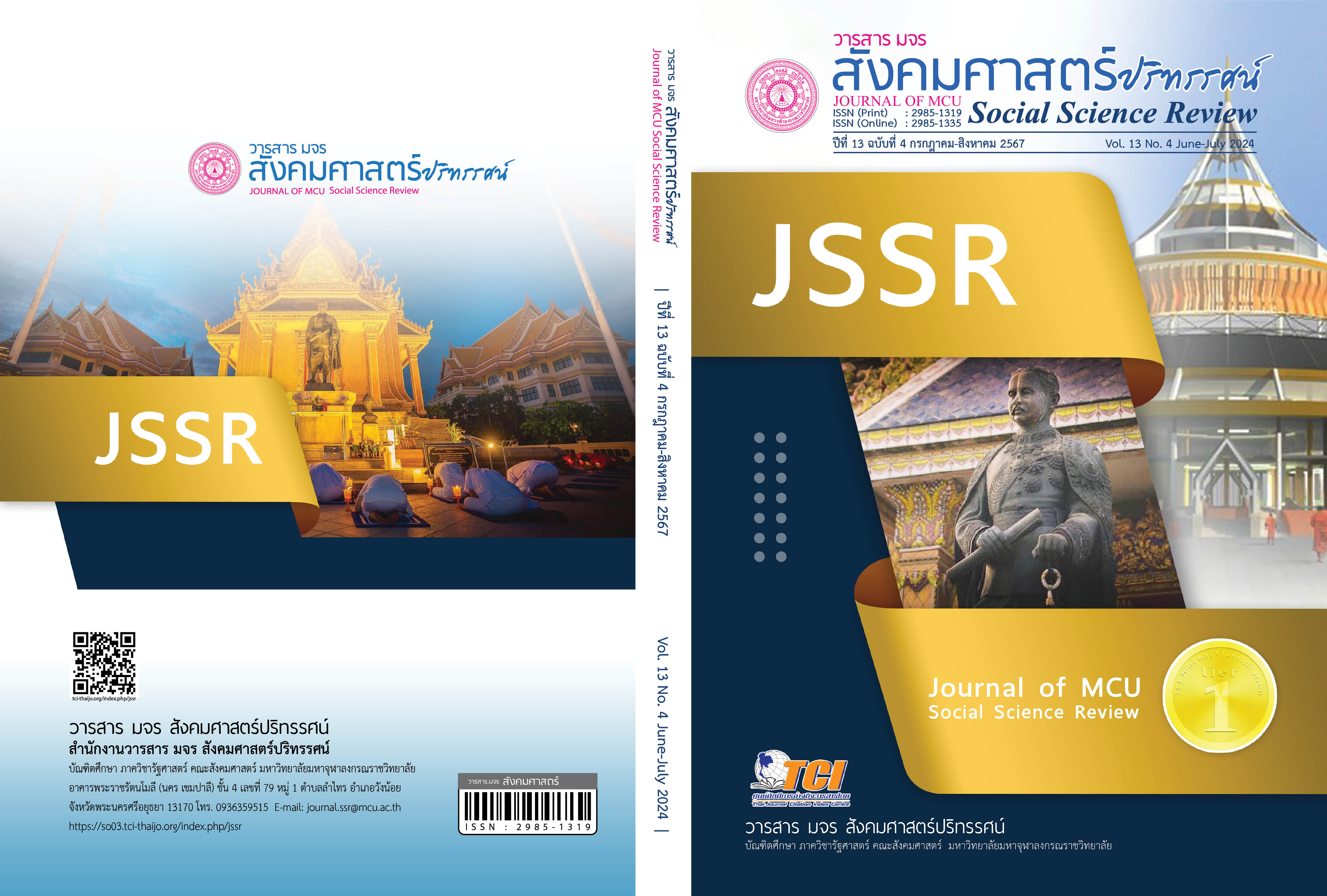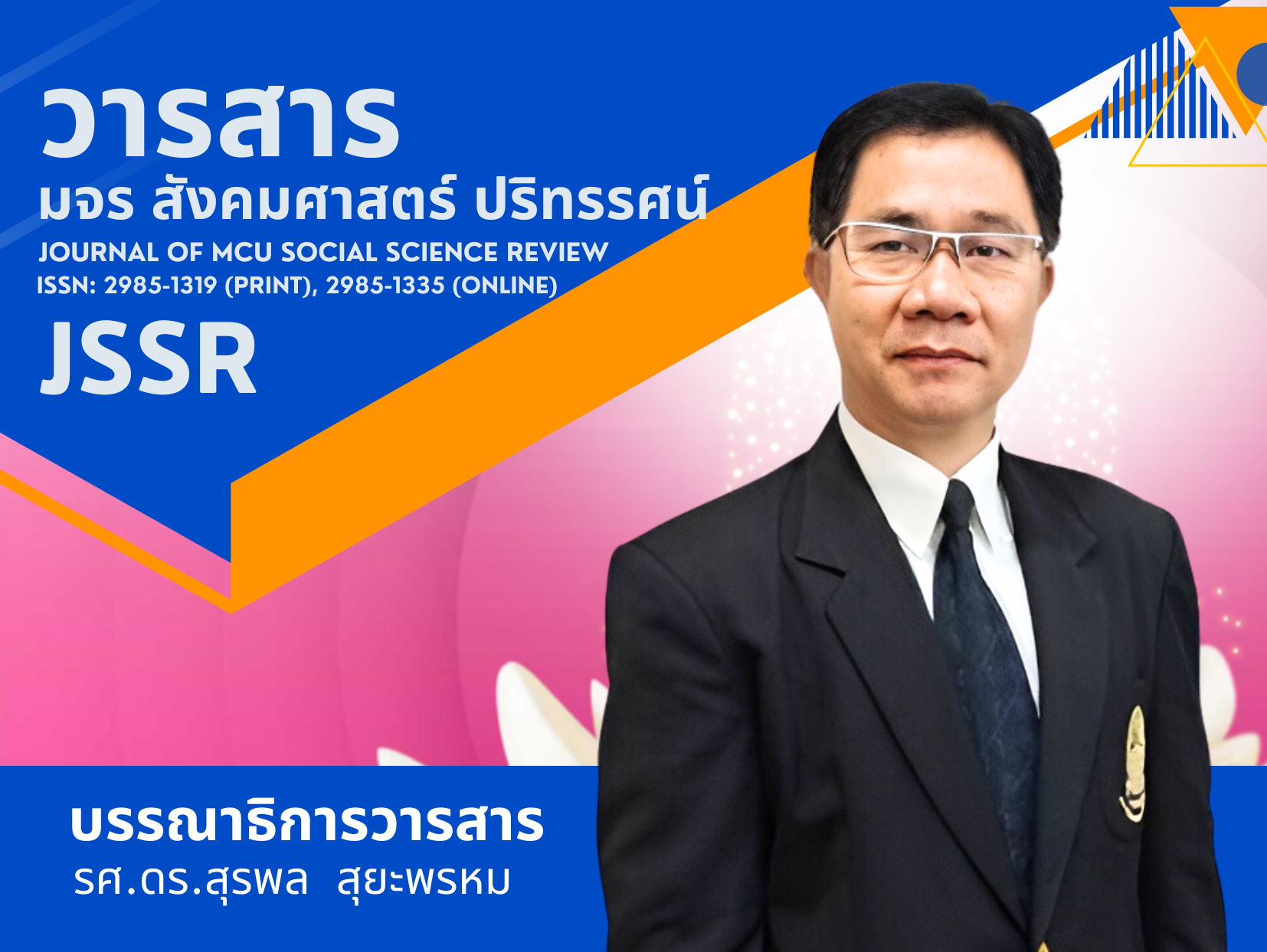CREATION AND DEVELOPMENT OF A BUDDHIST LEARNING ACTIVITY PACKAGE FOR STUDENTS IN GRADES 4-6
Keywords:
Creation and Development of Activity Package, Buddhist Based Learning, Grade 4-6 StudentsAbstract
Objectives of this research article were: 1. To study the state and problems in Buddhist learning activities, 2. To create and develop a Buddhist learning activity package, and 3. To evaluate effectiveness and efficiency of the Buddhist learning activity package for grade 4-6 students. The multiphase research methodology was used in the study. In phase 1, the quantitative data were collected from 382 students and the qualitative data were collected by interviews with 15 key-informants, and then analyzed by percentage, mean and standard deviation. In phase 2, the data were collected by group discussions with 10 key-informants. And in phase 3, the quantitative data were collected from 382 samples.
The study results were found that: 1. In the state and problems in Buddhist learning activities, there is a lack of qualified personnel in arranging Buddhist activities in 3 aspects; 1. Activities providing knowledge and significance of Buddhism, 2. Activities in Buddhist learning based on the Threefold Training, and 3. Activities for behaving a good Buddhist. 2. There are 4 steps in creating and developing the Buddhist learning activity package; 1. To build collaboration, 2. To study problems and create options, 3. To develop a Buddhist learning activity package, and 4. To evaluate the Buddhist learning activity package. 3. The evaluation results of effectiveness and efficiency of the Buddhist learning activity package for grade 4-6 students were at a high level totally. In aspects, the highest level was on feasibility, followed by utility, and application respectively.
References
กระทรวงศึกษาธิการ. (2564). นโยบายรัฐบาล. สืบค้น 4 ตุลาคม 2564, จากhttp://www.onec.go.th/
พระครูสมุห์วิโรจน์ วรมงฺคโล. (2554). สภาพปัญหาด้านการสอนของพระสอนศีลธรรมในสถานศึกษา สังกัดสำนักงานเขตพื้นที่การศึกษาประถมศึกษา ราชบุรี เขต 2 (วิทยานิพนธ์พุทธศาสตรมหาบัณฑิต สาขาวิชาการจัดการเชิงพุทธ). พระนครศรีอยุธยา: มหาวิทยาลัยมหาจุฬาลงกรณราชวิทยาลัย.
พระเทพโสภณ (ประยูร ธมฺมจิตฺโต). (2546). ทิศทางการศึกษาไทย. กรุงเทพฯ: โรงพิมพ์มหาจุฬาลงกรณราชวิทยาลัย.
พระพรหมคุณาภรณ์ (ป.อ. ปยุตฺโต). (2547). การศึกษาเริ่มต้นเมื่อคนกินอยู่เป็น. กรุงเทพฯ: อุษาการพิมพ์.
พระสถิต มหาลาโภ . (2553). การสอนวิชาพระพุทธศาสนาของพระสอนศีลธรรมในโรงเรียนวิถีพุทธ: กรณีศึกษาโรงเรียนบ้านโนนม่วง ตำบลศิลา อำเภอเมือง จังหวัดขอนแก่น (วิทยานิพนธ์พุทธศาสตรมหาบัณฑิต สาขาวิชาพระพุทธศาสนา). พระนครศรีอยุธยา: มหาวิทยาลัยมหาจุฬาลงกรณราชวิทยาลัย.
วีรนุช สุทธพันธ์. (2558). รูปแบบการบริหารจัดการโรงเรียนวิถีพุทธที่มุ่งเน้นจิตอาสาของนักเรียนประถมศึกษา. วารสารวิชาการมหาวิทยาลัยอีสเทิร์นเอเชีย ฉบับสังคมศาสตร์และมนุษยศาสตร์, 5(2), 112-121.
มณี ครไชยศรี. (2550). การจัดกิจกรรมพัฒนาผู้เรียน ตามหลักสูตรการศึกษาขั้นพื้นฐานโรงเรียนมงฟอร์ตวิทยาลัย จังหวัดเชียงใหม่ (วิทยานิพนธ์ศึกษาศาสตรมหาบัณฑิต สาขาวิชาการบริหารการศึกษา). เชียงใหม่: มหาวิทยาลัยเชียงใหม่.
รัชฎาพร จันภิรมย์. (2559). การศึกษาการจัดกิจกรรมส่งเสริมการเรียนรู้ตามหลักไตรสิกขาของนักเรียนโรงเรียนมัธยมศึกษา อำเภอบางปะอิน จังหวัดพระนครศรีอยุธยา (วิทยานิพนธ์พุทธศาสตรมหาบัณฑิต สาขาวิชาการบริหารการศึกษา). พระนครศรีอยุธยา: มหาวิทยาลัยมหาจุฬาลงกรณราชวิทยาลัย.
สำนักงานคณะกรรมการการศึกษาแห่งชาติ. (2544). พระราชบัญญัติการศึกษาแห่งชาติ พ.ศ. 2542 และที่แก้ไขเพิ่มเติม (ฉบับที่ 2) พ.ศ. 2545. กรุงเทพฯ: สำนักงานคณะกรรมการการศึกษาแห่งชาติ.
สำนักงานคณะกรรมการพัฒนาการเศรษฐกิจและสังคมแห่งชาติ. (2560). แผนพัฒนาเศรษฐกิจและสังคมแห่งชาติ ฉบับที่ 12 (พ.ศ. 2560-2564). กรุงเทพฯ: โรงพิมพ์คุรุสภา.
Downloads
Published
How to Cite
Issue
Section
License
Copyright (c) 2024 Journal of MCU Social Science Review

This work is licensed under a Creative Commons Attribution-NonCommercial-NoDerivatives 4.0 International License.
In order to conform the copyright law, all article authors must sign the consignment agreement to transfer the copyright to the Journal including the finally revised original articles. Besides, the article authors must declare that the articles will be printed in only the Journal of MCU Journal of Social Sciences. If there are pictures, tables or contents that were printed before, the article authors must receive permission from the authors in writing and show the evidence to the editor before the article is printed. If it does not conform to the set criteria, the editor will remove the article from the Journal without any exceptions.




